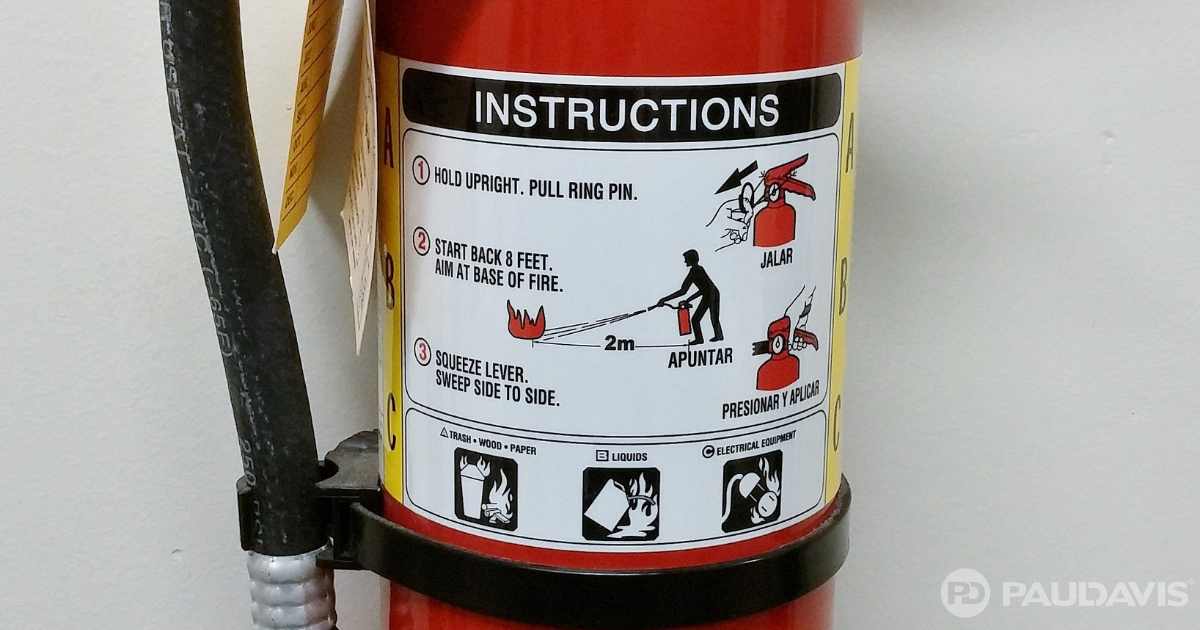
Fire is one of the most frightening occurrences that a business can encounter. What typically starts small, grows fast to become a catastrophe. Sure, your business has fire extinguishers on hand. But do all your employees know how to properly use them? When was the last time you checked? Or conducted fire safety instruction? Here are some ways to be sure your staff is spot on when it comes to responding to a fire incident.
“We explain to all our customers that the most common emergency that small business owners must plan for is fires,” says Eddie Bruce, President, Paul Davis Restoration, Fort McMurray, Alberta. Many people will grab for a fire extinguisher instinctively. They look pretty easy to operate and they are well known as a first line of offense when fighting small fires in the workplace, or to protect evacuation routes in the event of a larger one. But, knowing how to operate the extinguisher, when to use it, and when not to, is vital.” Bruce suggests these steps when you see fire or smell smoke in the workplace.
Step 1: Determine an escape route before approaching the source of smoke or locating the fire, that’s safe from smoke, flames or excessive heat. Do not allow this escape route to become blocked.
Step 2: Decide if the fire is small enough to be successfully extinguished with one or several bursts from a fire extinguisher. If deemed minor and easy to extinguish, grab your fire extinguisher and use the PASS technique for discharging the extinguisher:
Pull the pin on the extinguisher. Aim the hose nozzle low toward the base of the fire. Squeeze the handle to release the extinguishing agent. Sweep the nozzle from side to side at the base of the flames until extinguished.
Step 3. Call the fire department immediately if the fire isn’t now fully extinguished, or if fire flares up again, back away immediately and clear all others from the area if not already done.
Bruce reminds his customers that even well trained employees should be admonished not to attempt to be a hero when it comes to fires. “If the fire involves flammable solvents, is partially hidden behind a wall or ceiling, cannot be reached from a standing position, or covers more than 60 square feet in area, back away. Professional fire fighters are required. This is also true if levels of smoke make the fire impossible to fight without respiratory protection.” Other cautions involve radiated heat easily felt from 10 feet or beyond the effective fire extinguisher range of 10-15 feet.
Fire extinguishers are recommended only for quickly subduing easily contained small fires. Employees should know full well to evacuate any area at the first sign of a suspected or actual fire.
